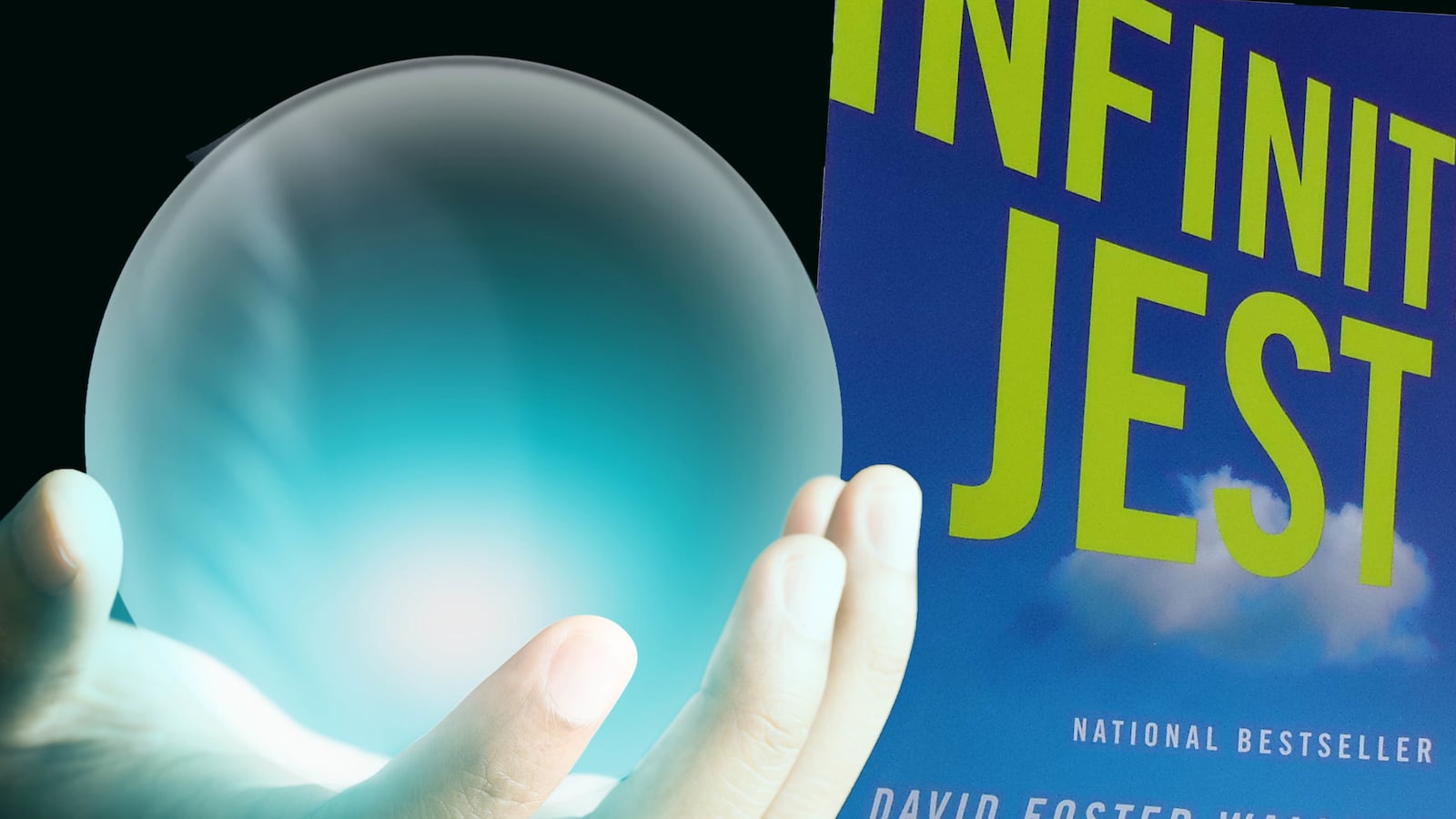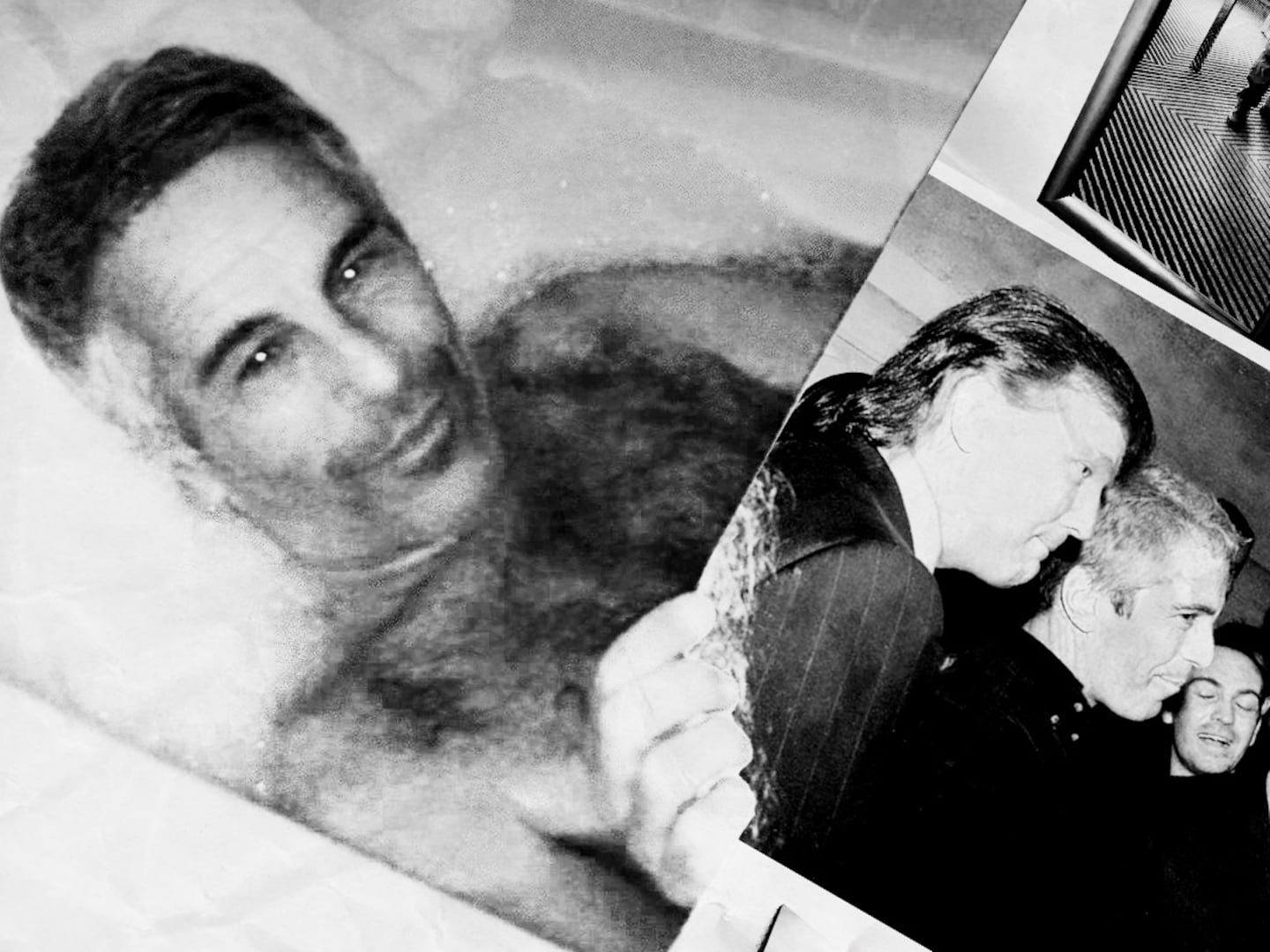Happy birthday, Infinite Jest, your creepy predictions have come true.
The giant novel, which was akin to getting through War and Peace for children of the ’90s, just had its 20th birthday on Feb. 1. It’s the kind of book you buy and leave on the bookshelf for years, then finally dust off, only to read about 50 pages before realizing your arms are tired.
That’s how it went for me. I couldn’t carry it around, couldn’t curl up with it in bed, and even if I was committed enough to do so, the endnotes were just unruly. But last year, I finally succumbed. After years of resisting a Kindle, I decided that reading this behemoth digitally might be the only way I would get through the novel. So, I read all 1079 pages on my ever-present phone over the course of 10 months (with a few much-needed breaks).
It was perfect. The endnotes are hyperlinked so that you can toggle back and forth with ease and the more I became involved in the world of the Incandenza’s, Don Gately, and the search for The Entertainment, the more I thought David Foster Wallace wouldn’t be mad. It was almost as if he intended it to be read in a digital medium.
The book is written in what would be the near future for Wallace—that is to say, somewhere around now. Although some of the tech language is still clunky ’90s, we have embraced several of the themes—from binge-watching to the fact that FaceTime and other video communication haven’t become as much a part of our daily lives as one would think. As he puts it:
AND BUT SO WHY THE ABRUPT CONSUMER RETREAT BACK TO OLD VOICE TELEPHONING? The answer, in a kind of trivalent nutshell, is: (1) emotional stress, (2) physical vanity, (3) a certain queer kind of self-obliterating logic in the micro-economics of consumer high-tech…
Good old traditional audio-only phone conversations allowed you to presume that the person on the other end was paying complete attention to you while also permitting you not to have to pay anything even close to complete attention to her…
During a traditional call, e.g., as you let’s say performed a close tactile blemish-scan of your chin, you were in no way oppressed by the thought that your phonemate was perhaps also devoting a good percentage of her attention to a close tactile blemish-scan…
And the videophonic stress was even worse if you were at all vain, i.e., if you worried at all about how you looked. As in to other people. Which all kidding aside who doesn’t.
Wallace’s solution to this anxiety-inducing vanity was high-definition masks. It started as better-looking versions of ourselves that we hung next to our device, ready to put on every time the phone rang. Ambitious businessmen and inventors soon graduated to even higher quality masks called “The Tableaux,” which took photographs and scaled them down so they would fit over the videophone camera, “not unlike a lens-cap.”
Still, it didn’t take hold. It was too unnerving to be seen every time the phone rang. And this seems to be the case. Other than for international calls, which for the most part are the cheapest way to go, we don’t walk around the street video-chatting with one another. In fact, it’s still bizarre when someone on the street does so. Google Glass failed miserably. As ready as we are to adopt all forms of technology seamlessly into our daily lives, we seem to have collectively rejected “videophoning.” That said, Wallace’s idea for the Tableaux has taken hold, in part. Instagram filters put a nice sheen on otherwise ordinary people, sometimes doing mundane things. Without those filters, how many people would continuously post selfies? Would there be a need for #nofilter and “No Makeup Mondays”? Where would Kim Kardashian be?
On the other end of the spectrum, a behavior we have fully embraced is binge-watching. For Wallace, it all started with the show M*A*S*H*. I was certainly guilty of whiling away summer afternoons with Hawkeye, mostly because it was just on. Remember watching things because there was nothing else on?
In Infinite Jest , Hugh/Helen Steeply remembers how his/her father fell down the M*A*S*H rabbit hole:
‘Television or broadcasting and—how did one express it?—the passivity.’ Yes. Broadcast television. The program in question was called M*A*S*H.” The title was an acronym, not a command. As a boy I can recall some confusion on this point’…
‘But then: syndication. M*A*S*H. The show was incredibly popular, and after a few years of Thursday nights it started also to run daily, during the day, or late at night, sometimes in what I remember all too well was called syndication, where local stations bought old episodes and chopped them up and loaded them with ads, and ran them. And this, note, was while all-new episodes of the show were still appearing on Thursdays at 2100. I think this was the start…
‘It was gradually obvious he was viewing his magnetic recordings of the program M*A*S*H throughout the night, probably over and over again, using a crude white plastic earplug to hide the noise, scribbling feverishly in his notebook.’
So we have graduated from “magnetic recordings” to streaming, but the idea holds. In fact, we have taken Wallace’s prediction even a step further. At least there had to be some intentionality in Steeply’s father’s obsession. He had to know when the show aired, he had to make a move in order to tape all the episodes. He made notes about the show. He wrote raving letters to the characters. We have taken the “passivity” to another level. At least I have. No one should spend two days watching Damages.
But those “crude white plastic earplugs” are ubiquitous and comments sections can be stark raving mad. We’re even taking binge-watching to binge-reading, whether it’s on Twitter, Facebook, or the social media of the day, or it’s on Kindle. Maybe The Entertainment is on its way.
Now, excuse me while I go put my head in a microwave oven.






